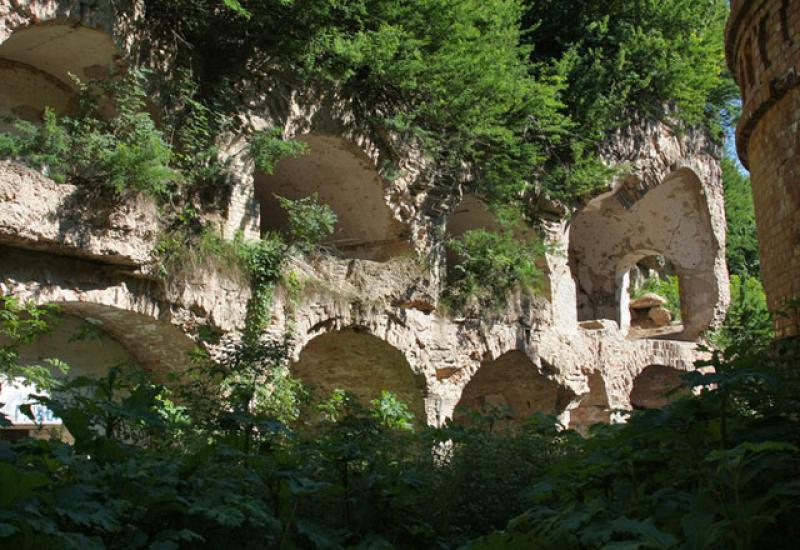There is in the Rivne region near the village of Cockroaches an amazing place. The seemingly ordinary, forest road leads to the ordinary hill with cut tunnel. And after going through it, you will get into a ghost town. Time and nature gradually take their own, but it is even guessed restrained beauty of two-storey buildings and an impregnable fortress of bastions. This is Dubno (Tarakanovskiy) military fort. Its construction started in the middle of the XIX century with the aim to protect the western borders of the empire, in particular the railway in Rivne. It was built for a long time - from 1860 to 1890. Only pits were dug for more than 10 years. The construction was unique for that time: the diamond-shaped concrete and earthwork fortress with a side of 240 m.
It was surrounded by the moat 13 meters wide and a depth of 6 m, and the outer shaft there were hiding 105 casemates with a 3-foot wall: two floors above ground and three - at the bottom. There were here the military positions, residential and store premises equipped with ventilation and heating, with electric lights and telephones; the stable (horses pulled a guns weighing sometimes hundreds of pounds), hospital, church, autonomous water supply (with three independent sources for technical and human needs), sewage and other. There was a strict security system, ingenious traps for unwanted visitors (some hatches, that dumped incautious on sharpened metal bars, were filled with concrete after World War II). The moat was equipped with special metal bridge to access the casemats. There are still on the territory many underground tunnels. Stone tunnel leads to the central two-storey building, with the headquarters and training facilities. The latter had a long corridor for arrangements and walks. On both sides of it there are the low doors (do not forget to take off the cap) leading to the classes, communicated by the doors in the side walls. That is, along the far wall it was formed the enfilade, pacing which observers monitored the subordinates, which mastered the military wisdom. The garrison of the fort consisted of up to a thousand people (one artillery and two infantry companies). It was armed with 40 guns (some shot at 13 km) and 10 machine guns. At the opening the fortress was visited by the Emperor Alexander III. Everything was pompous, majestic, but ... useless. Fort did not become a full-fledged military fortification.
From 1900 it was used as a warehouse, since 1905 - as a prison. Ironically, during the First World Russian troops left the fortifications, and then during Brusilovsky breakthrough in 1916 knocked out of the fort the Austrian soldiers and fully “enjoyed” the talent on the engineers who built the fortifications. In 1920, Budenny cavalry stormed the fort, driving out the Poles. During World War II the fort no longer had military significance, gradually turning into the store, which changed owners and range. One could not this concrete and stone monster on the balance of the military to adapt to anything in our time. It blinks with the eyes of empty windows and attracts by its ruins, generously covered with greenery, scares with legends about ghosts and rumors, backed by photographs.
At present, this powerful fortress - like the Flying Dutchman, was left without his team. But maybe in the evening, when the tourists will leave the fort, old soldiers will return to their barracks. In any case, nobody is brave enough to pass the night not only in its territory, but in the surrounding area.

